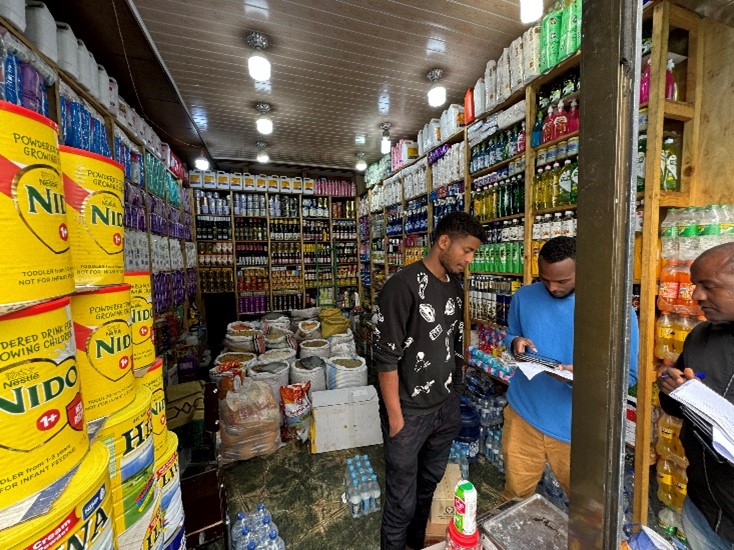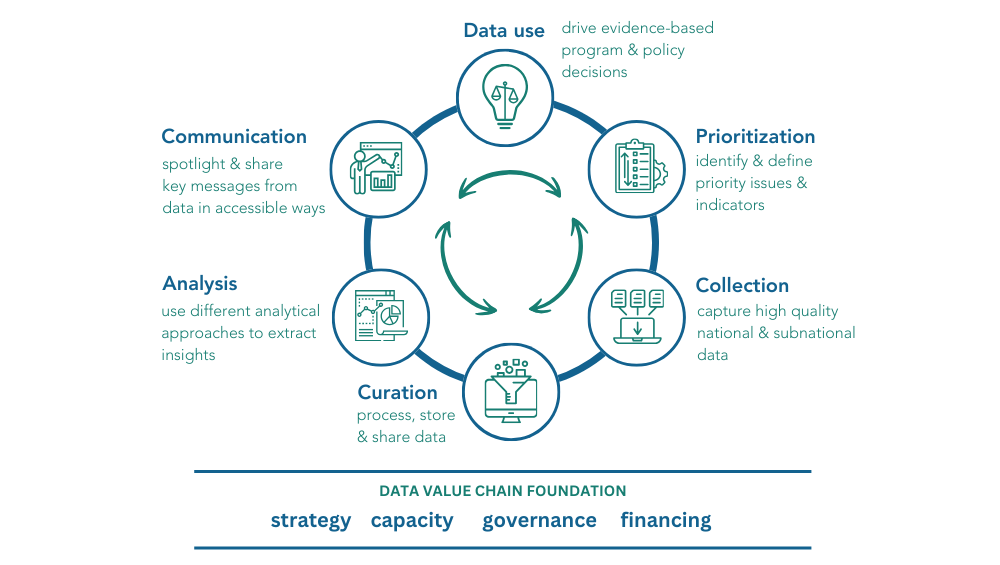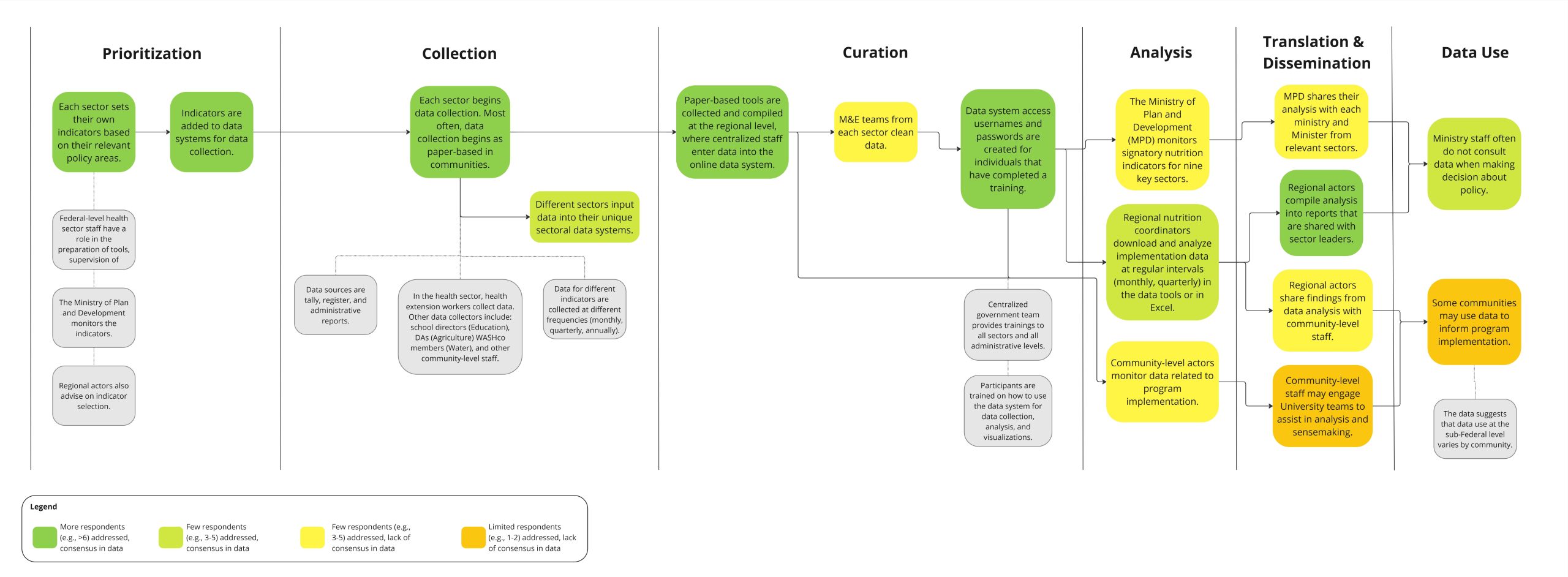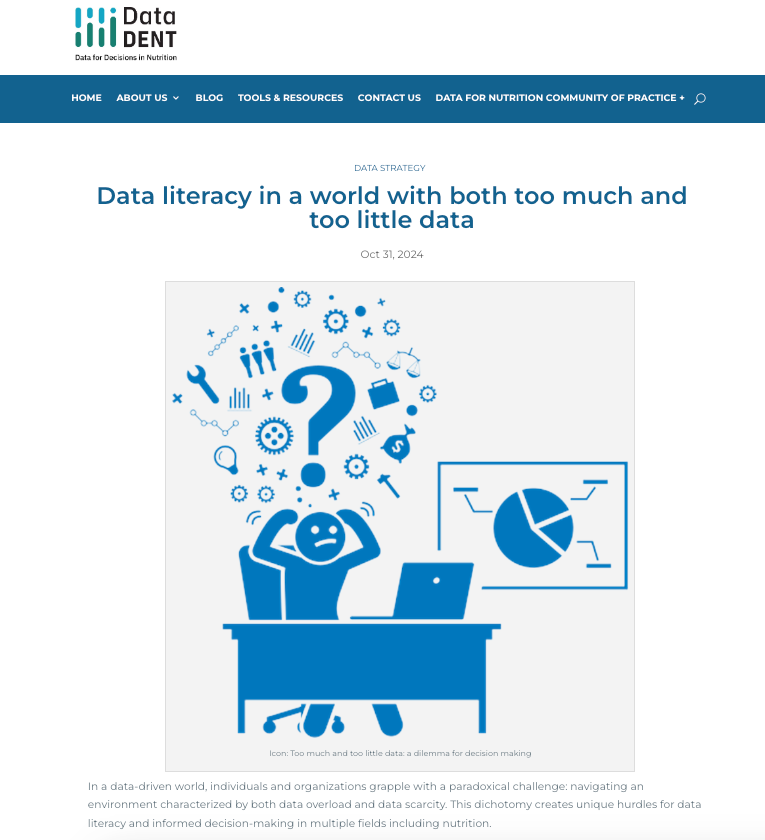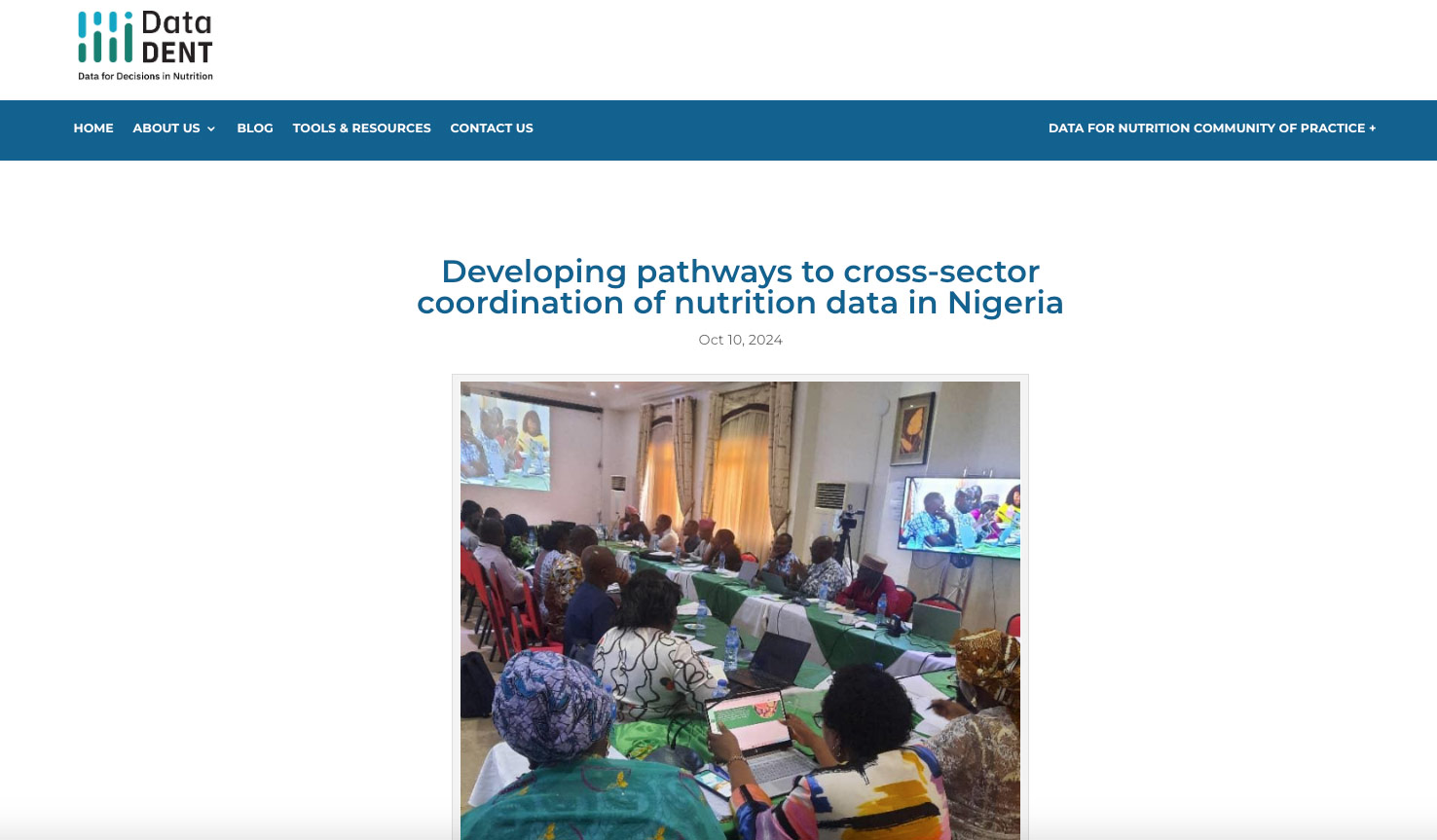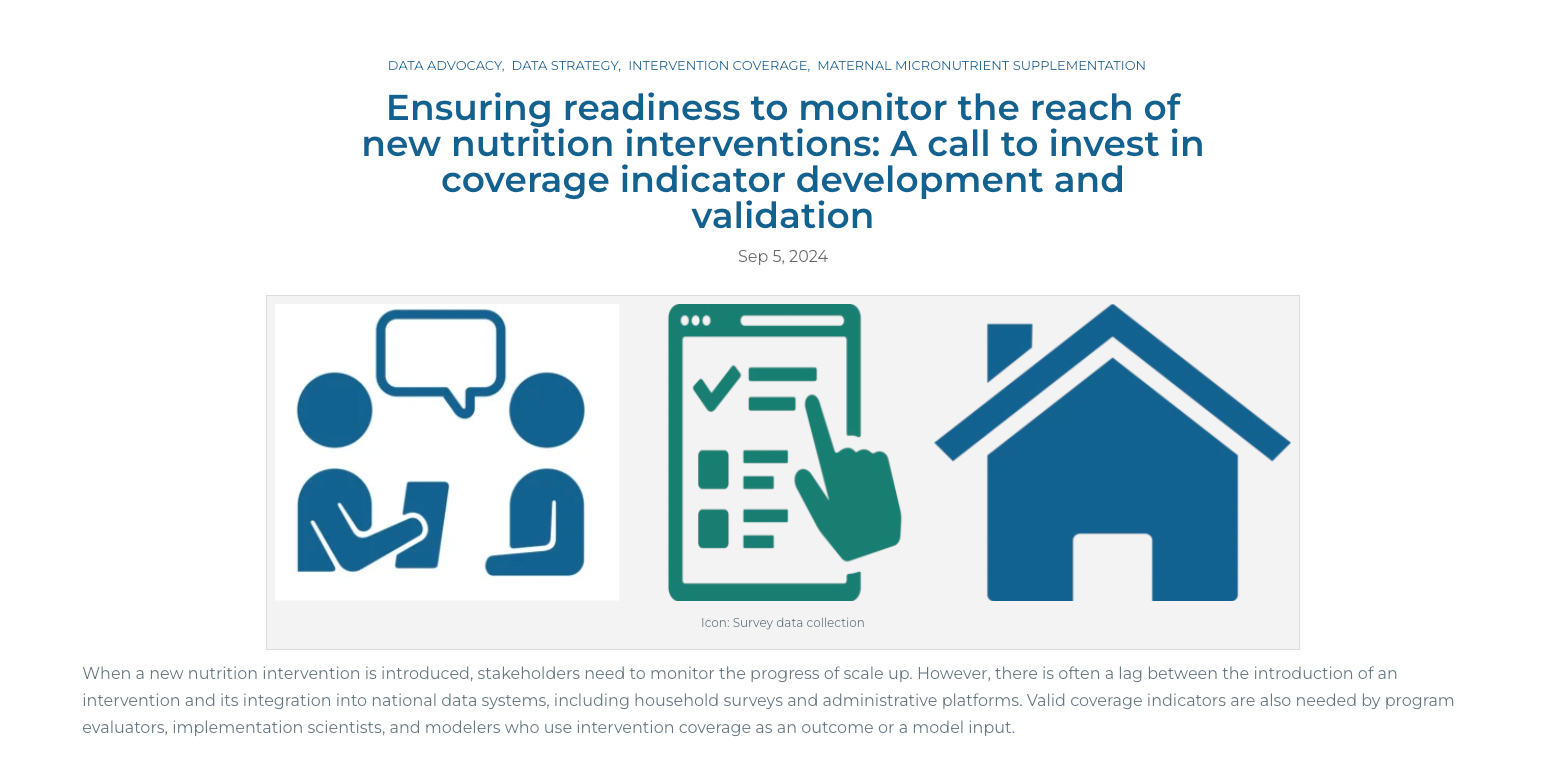Revisiting the nutrition Data Value Chain: an updated framework to promote data use
This blog captures the changes made to the nutrition data value chain (DVC) framework based on DataDENT’s experience with the stakeholders’ engagement in LMICs.
Using process maps to guide the scale-up of national nutrition information systems in Ethiopia
This blog showcases the development of process maps to support the scale-up of Ethiopia’s multisectoral information systems.
Improving multi-sectoral nutrition coverage measurement: The One Nutrition Coverage Survey in Bangladesh
This blog highlights the One Nutrition Coverage (ONCS) piloting activities in Bangladesh for measuring multisector nutrition intervention coverage.
Who needs nutrition data? Reflections from DataDENT in Nigeria
This blog shares some early findings from a nutrition data assessment in Nigeria among stakeholders working in agriculture, education, social protection, WASH, and emergency sectors.
Taking action: Improve the nutrition content in DHS Round 9 surveys
This blog captures joint recommendations around four topic areas for the DHS-9 questionnaire revision.
Bridging the humanitarian and development divide through nutrition information systems
This blog explores the roles that nutrition information systems (NIS) play in supporting a more unified approach to nutrition and food security responses along the humanitarian-development continuum.
Data literacy in a world with both too much and too little data
This blog highlights the importance of strong data literacy and a culture of data use for teams to effectively navigate their nutrition data landscapes.
Developing pathways to cross-sector coordination of nutrition data in Nigeria
This blog provides an update on DataDENT's efforts in Nigeria to improve coordination of nutrition data across sectors.
Ensuring readiness to monitor the reach of new nutrition interventions: A call to invest in coverage indicator development and validation
This blog builds a case for investing in the design and validation of new intervention coverage indicators within ongoing trials, evaluations and implementation research.
Revisiting the nutrition Data Value Chain: an updated framework to promote data use
This blog captures the changes made to the nutrition data value chain (DVC) framework based on DataDENT’s experience with the stakeholders’ engagement in LMICs.
Using process maps to guide the scale-up of national nutrition information systems in Ethiopia
This blog showcases the development of process maps to support the scale-up of Ethiopia’s multisectoral information systems.
Improving multi-sectoral nutrition coverage measurement: The One Nutrition Coverage Survey in Bangladesh
This blog highlights the One Nutrition Coverage (ONCS) piloting activities in Bangladesh for measuring multisector nutrition intervention coverage.
Who needs nutrition data? Reflections from DataDENT in Nigeria
This blog shares some early findings from a nutrition data assessment in Nigeria among stakeholders working in agriculture, education, social protection, WASH, and emergency sectors.
Taking action: Improve the nutrition content in DHS Round 9 surveys
This blog captures joint recommendations around four topic areas for the DHS-9 questionnaire revision.
Bridging the humanitarian and development divide through nutrition information systems
This blog explores the roles that nutrition information systems (NIS) play in supporting a more unified approach to nutrition and food security responses along the humanitarian-development continuum.
Data literacy in a world with both too much and too little data
This blog highlights the importance of strong data literacy and a culture of data use for teams to effectively navigate their nutrition data landscapes.
Developing pathways to cross-sector coordination of nutrition data in Nigeria
This blog provides an update on DataDENT's efforts in Nigeria to improve coordination of nutrition data across sectors.
Ensuring readiness to monitor the reach of new nutrition interventions: A call to invest in coverage indicator development and validation
This blog builds a case for investing in the design and validation of new intervention coverage indicators within ongoing trials, evaluations and implementation research.

